Basiliscus basiliscus
—
Common Basilisk
Also known as:
Brown Basilisk, Jesus Christ Lizard
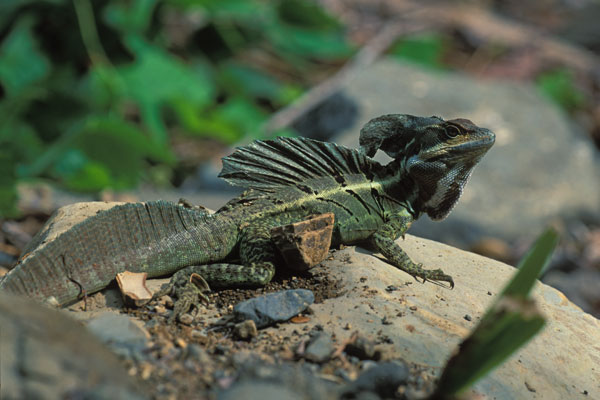
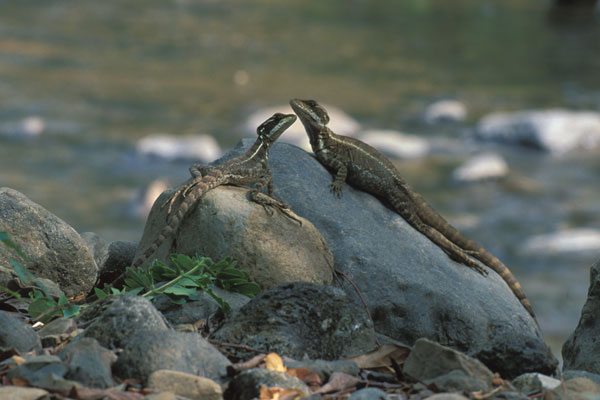
Adult male basilisks have tremendous crests and sails with which to impress female basilisks, and humans (I know I was impressed, anyway). These lizards are extremely agile and speedy, but they're not averse to posing for a photo.
The pair in the second photo are probably adult females, but could be younger males. Basilisks are usually found near water, and these were no exception, basking on the rocks near a stream.
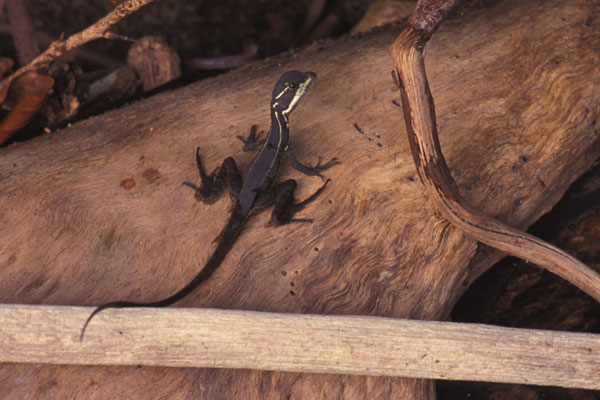
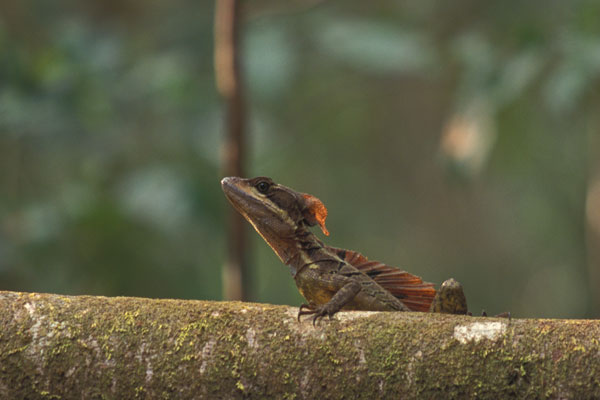
The little tyke in the top photo was perhaps the smallest of the numerous basilisks we saw on this trip, about six inches long or so including its tail.
The bottom photo shows another adult male on a log in the forest, backlit by the late afternoon sun. The full-sized ones like this are perhaps 3 feet long including the tail.
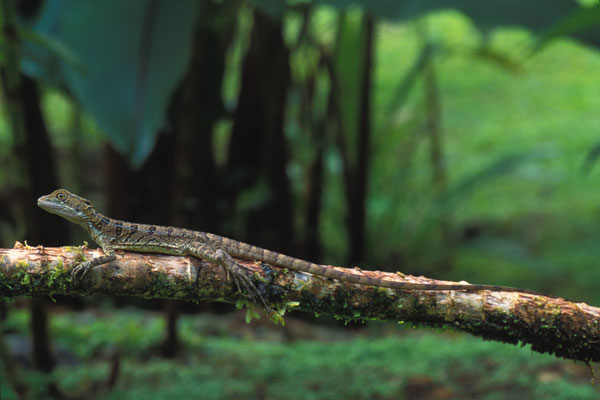
We caught this large female basilisk sleeping at night on a large leaf. When we took her photo by day, she sat still for about two shots and then bolted into the forest.
Here is a complete list of the species we found on this GreenTracks trip.
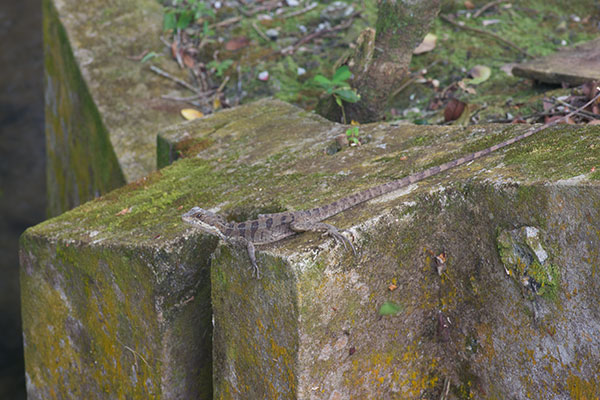
An hour or two before dusk, a rain shower had just ended, and I started wandering around the hotel grounds to see what might be seen. This adult female basilisk was taking advantage of the last warmth of the day on top of a thick concrete bridge support.
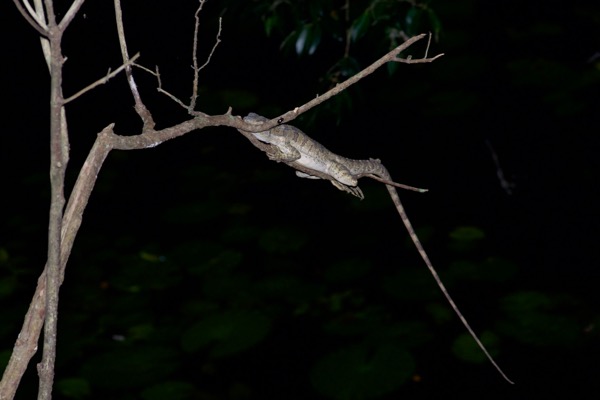
At night, basilisks find what seem like safe places to sleep. It would be hard (for example) for a snake that is large enough to eat this basilisk to actually climb the thin branches required to reach it. Sleep tight, mamma basilisk!
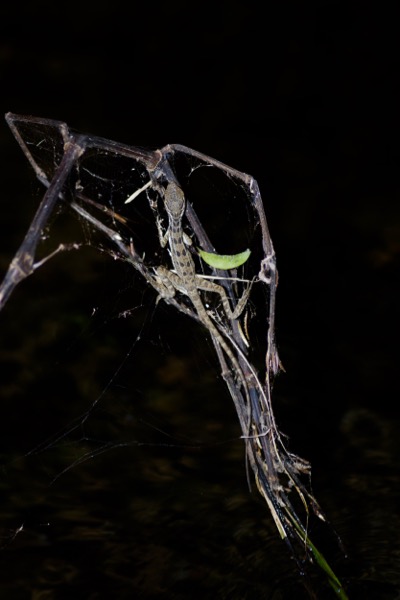
This baby basilisk has the same idea, but did not execute it very well. A minute or two before I took this photo, a false coral snake that was definitely large enough to eat this lizard climbed this vegetation and passed right over the unmoving lizard. Fortunately for the basilisk, false coral snakes are amphibian-eating specialists.
Printed references:
- Beletsky, L. 1998. Costa Rica: The Ecotraveller's Wildlife Guide
- Hayes, M. P., Pounds, J. A., Timmerman, W. W. 1989. An Annotated List and Guide to the Amphibians and Reptiles of Monteverde, Costa Rica
- Leenders, T. 2001. A Guide to Amphibians and Reptiles of Costa Rica
- Obst, F. J., Richter, K., Jacob, U. 1988. The Completely Illustrated Atlas of Reptiles and Amphibians for the Terrarium
- Savage, J. M. 2002. The Amphibians and Reptiles of Costa Rica
- Savage, J. M., Villa R., J. 1986. Introduction to the Herpetofauna of Costa Rica